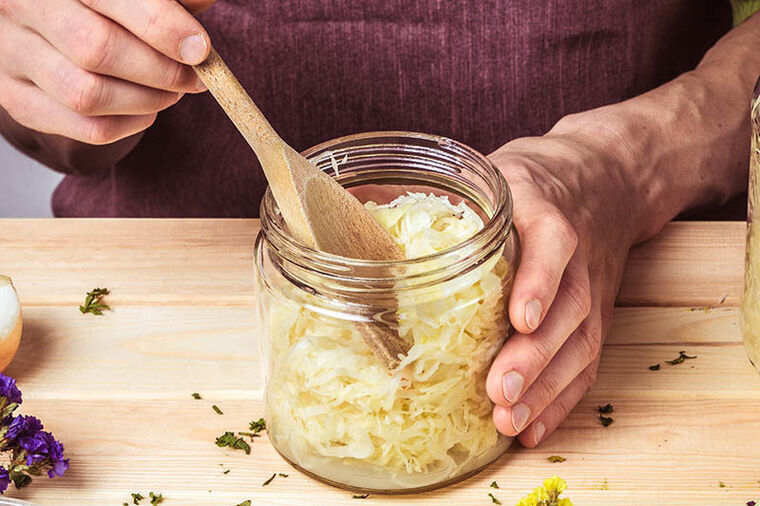Nourish your gut bacteria with sauerkraut, which also contains loads of vitamins, minerals and lactic acid.
- DF Dairy free
- GF Gluten free
- Ve Vegan
- VG Vegetarian
- S/S Sides/Snacks
- GUT Gut-healthy
- Prep time 20 mins
- Cook Time 10 mins
- Serves 30
- Difficulty medium

Method
- Clean and rinse jar and bowl thoroughly.
- Remove and discard cabbage's wilted outer leaves and core. Thinly slice remaining cabbage, then combine with salt in mixing bowl.
- Squeeze and massage cabbage with your hands for 10-15 minutes, until you have a very wet mixture.
- Add your chosen seasonings and mix through.
- Pack the mixture into the jars as tightly as possible, pressing down as you go. (For food safety, the cabbage needs to be completely covered by liquid throughout the fermentation process. If it is not, mix 1 tablespoon salt with 2 tablespoons water, add to jar and press mixture down firmly. Repeat as necessary.)
- Cover jar top with fabric, secure with elastic band or string.
- Store in pantry, out of direct sunlight, and allow to ferment for 10 days. Then, move it to the fridge and enjoy!
Nutritional information
Traditionally-made sauerkraut has had a long journey throughout human history and can be traced back to 400 BC.
Sauerkraut can be used in many ways. Add it to salads, sandwiches, wraps and burgers, or serve as a side for roasts, vegies, curries, casseroles and stir-fries.
It contains vitamins A, B, C and K, various minerals, live lactobacilli (beneficial gut bacteria, also known as probiotics) and a large amount of lactic acid.
It is best eaten uncooked to preserve this good bacteria. Cabbage is also a prebiotic, feeding existing healthy gut bacteria.




